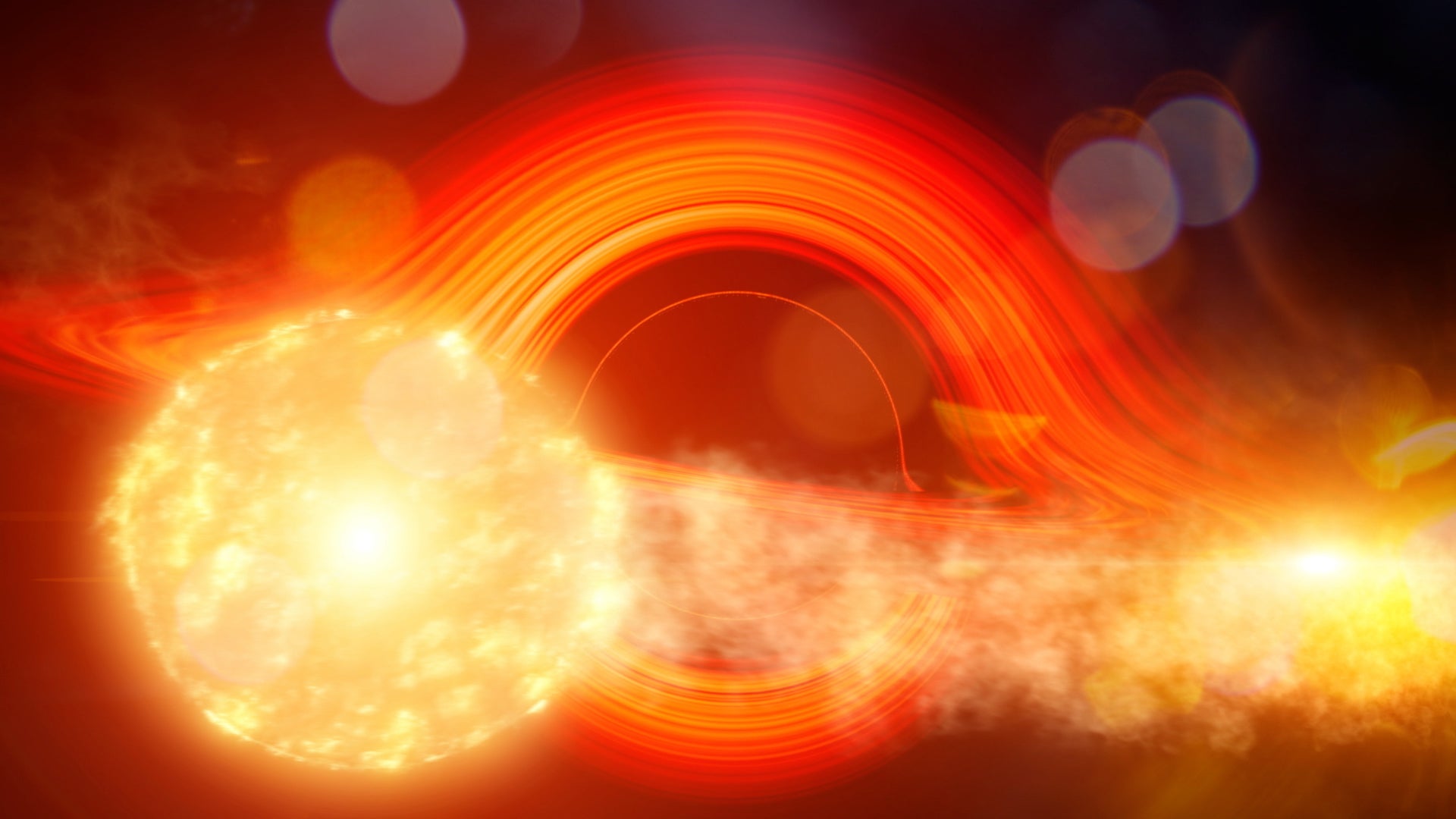Scientists clocked a black hole spinning at a quarter of light speed
Astronomers have managed to measure the spin of a supermassive black hole, which could help reveal how they grew in the universe

A team of astronomers has managed to calculate the speed of a distant supermassive black hole’s spin thanks to the object’s chance meeting with a star—which it promptly destroyed.
Suggested Reading
All black holes have spin, which they develop through their interactions with other matter in space. When black holes grow by accreting matter, they can spin to greater speeds; when they grow through mergers with other massive objects, they tend to slow down. In its recent work, the team managed to deduce a supermassive black hole’s spin by measuring the wobble of its accretion disk after a star has been disrupted—a polite word for torn up—by the gigantic object. They found the black hole’s spin was less than 25% the speed of light—slow, at least for a black hole. The team’s research was published today in Nature.
Related Content
“The spin of a black hole is tied to its evolution. For example, a black hole that grew by steady accretion of gas over billions of years tends to be high spinning while a black hole that grew by mergers with other black holes should be slow spinning,” said Dheeraj Pasham, an astronomer at MIT and the lead author of the new paper, in an email to Gizmodo.
Black holes are regions of spacetime with gravitational fields so intense that not even light can escape them beyond a certain point, called an event horizon. But black holes also pull plenty of material into their vicinity, which is brilliant, allowing researchers to study the physics of these shadowy behemoths. The material—an assemblage of rocky debris, dust, and gas—is the black hole’s accretion disk, and its bright glow is what makes it possible for the Event Horizon Telescope to directly image black hole shadows.
“There are other modes in which supermassive black holes—and hence their host galaxies—can grow over time, and each mode has a specific prediction for spin distribution,” Pasham added. “Thus, if we can measure the spin disruption of supermassive black holes we can constrain how they (and their host galaxies) grew over cosmic time.”
Occasionally, unfortunate stars that pass too near a black hole get ensnared by its tidal force and get torn to bits; some of the star may get flung out into space while some of it is stretched into a bounty of superheated stellar material that becomes part of the black hole’s accretion disk.
The spinning giant was detected in February 2020, when the Zwicky Transient Facility detected a flash of light from an object 1 billion light-years from Earth. The team studied the light source, which they believed to be a tidal disruption event, for over 200 days using NASA’s NICER telescope, which observes the cosmos at X-ray wavelengths.
The group discovered that the X-ray emissions from the source peaked every 15 days. This led the team to conclude that these peaks occurred when the accretion disk was directly aligned with the telescope. Working backwards from this apparent wobbling of the accretion disk, the team considered the black hole’s approximate mass as well as that of the star it had scooped material from. They arrived at an estimate for the spin of the black hole itself.
It’s not the first time a black hole’s spin has been calculated; in 2019, a team that included Pasham found a signal that they associated with a black hole spinning at about half the speed of light. However, as Pasham told Gizmodo, that nature of that signal “is still a mystery” whereas the new measurement corresponds to the black hole’s spin in accordance with relevant theories. While a black hole spinning at one-quarter the speed of light (167,654,156 miles per hour, or 74,948,114 meters per second) is still very fast in our plain ol’ human terms, we have to remember that these are some of the most extreme objects in the universe.
Pasham added that a black hole cannot spin faster than 94% the speed of light, or 630,379,631.62 mph (281,804,910.52 m/s), as Kip Thorne calculated in 1974. This maximum is due to the amount of torque on the black hole generated by radiation emitted from the accretion disk and swallowed by the black hole. MIT also produced a helpful video to walk folks through the new findings, which you can watch below:
Flashes of X-rays from distant objects in space are often a sign of black holes up to their usual shenanigans. In 2021, a team including Pasham determined that a weird object in space known as ‘the Cow’ may have been a black hole being born; in 2022, another flash from an object 8.5 billion light-years away turned out to be the most distant tidal disruption event yet observed, and which saw its black hole blast a jet of superheated material directly at Earth.
The team will keep cataloguing tidal disruption events, with the goal of figuring out the spin distribution of supermassive black holes. The arc towards understanding the black hole universe is long, but deciphering their physics could help us crack some of the universe’s biggest mysteries.